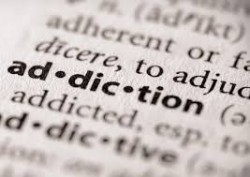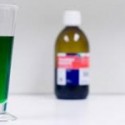Is there an Addiction Severity Index?
According to the National Institute on Drug Abuse, there is an addiction severity index. This index was first developed in 1980. In today’s world of addiction and addiction recovery, doctors sometimes have a difficult time deciding whether to put a patient on medications that are potentially addictive. Since the recent legislation penalizing doctors for prescribing medication that might be abused this index has become more important than ever. The severity index is a valuable tool for doctors and psychologists to correctly predict, diagnose, and treat addiction.
For help finding addiction treatment call 888-646-0635Who Answers? toll free anytime.
What is the Addiction Severity Index Used For?
Doctors use this index to both predict the potential for addiction and judge the severity of that addiction. It is designed to help compile information on a patient’s life and circumstances; they then use this information to decide what course of treatment to pursue.

There is an index that determines the severity of a person’s addiction and it is used in treatment.
In some cases the assessment is used to predict tendencies towards addiction. This stops them from prescribing potentially addictive substances. They also attempt to find nonaddictive alternatives to these substances. It also allows them to monitor people while they are on addictive medications for addiction before it becomes a serious threat.
In other cases, this assessment lets doctors understand how severe an addiction already is. When someone is addicted to a substance or behavior, they are not always forthcoming about how severe it is. By going through the assessment, doctors can tell without the patient knowing. It takes some of the guesswork out of understanding their patient’s needs.
According to the National Library of Medicine, the assessment may also be used to point out problems in previous or current treatment. By examining the social and lifestyle factors, doctors can assess improvement.
How Does the Assessment Work?
This assessment works by looking at a person’s life, circumstances, and other factors instead of just their medical condition. Since addiction and the potential for addiction is not just an illness, by taking everything into account it gives the doctor a more reliable scale.
The scale uses several factors to do this. It examines:
- Medical status – a severely ill person is more likely to abuse drugs than a perfectly healthy one. In the case of severity, some medical issues indicate addiction.
- Employment – someone who is employed and happy in their job is less likely to abuse drugs than someone is who unemployed or under employed. In the case of severity, a person may have lost their job due to their addiction.
- Drug use – although using drugs is not necessarily an indicator of being addicted, it does make addiction more likely. In the case of severity, someone who admits and is open about their drug use is less likely to be severely addicted, unless they are ready to admit that they are.
- Alcohol use – like drug use, alcohol use makes it more likely that a person will become addicted.
- Legal status – someone who is in legal trouble is more likely to become addicted as a coping mechanism. Depending on the legal trouble, it might be caused by a severe addiction.
- Family status – those with a good support structure is unlikely to have a problem with addiction while those who do not often have a problem. In the case of severity, addiction may have destroyed their family and ruined friendships.
- Psychiatric status – Some people who psychiatric issues such as depression and anxiety, are more susceptible to addiction. People with psychiatric issues sometimes have these issues because they are using or withdrawing from drugs.
These factors are the leading contributors to addiction and a good predictor of addiction.
Severity and Composite Scores
The severity index is what the assessment uses to judge addictive behavior and severity. The 10 point scale shows what level of addiction a person is at. This scale is:
- 0 or 1 – everything is fine and no treatment is needed,
- 2 or 3 – there might be a problem and further evaluation is needed,
- 4 or 5 – there is a problem and mild treatment should be undertaken,
- 6 or 7 – the problem is severe and treatment is definitely needed,
- 8 or 9 – the problem is extreme and treatment should begin immediately.
The composite scores are a later addiction to the severity index. These scores only deal with the last 30 days of treatment. Researchers made this addition to assess whether the treatment is working or not. It also indicates when a change in treatment is needed.
Both of these scores were developed mathematically to take human opinion and presumption out of the equation. By using a concrete assessment, it is possible to reliably predict the need for treatment and the severity of the addiction.
We can help you find addiction treatment. Call 888-646-0635Who Answers? toll free anytime.
Taking the Assessment
Drug rehabs and treatment centers as well as doctors and psychologists may use the Addiction Severity Index to evaluate you. This index is to help you, not to judge you. In the case of predicting addiction, it is helpful for doctors to know what is going on in your life and what treatment issues you face.
In the case of judging severity of addiction, it can help design a treatment that works for you. Most people who are taking the addiction assessment have already admitted there is a possible problem. This just helps doctors with how to proceed from there.
When the assessment is used for assessing how the treatment is working, it helps doctors change the overall design of the treatment. This makes sure that you are getting the treatment you need.










